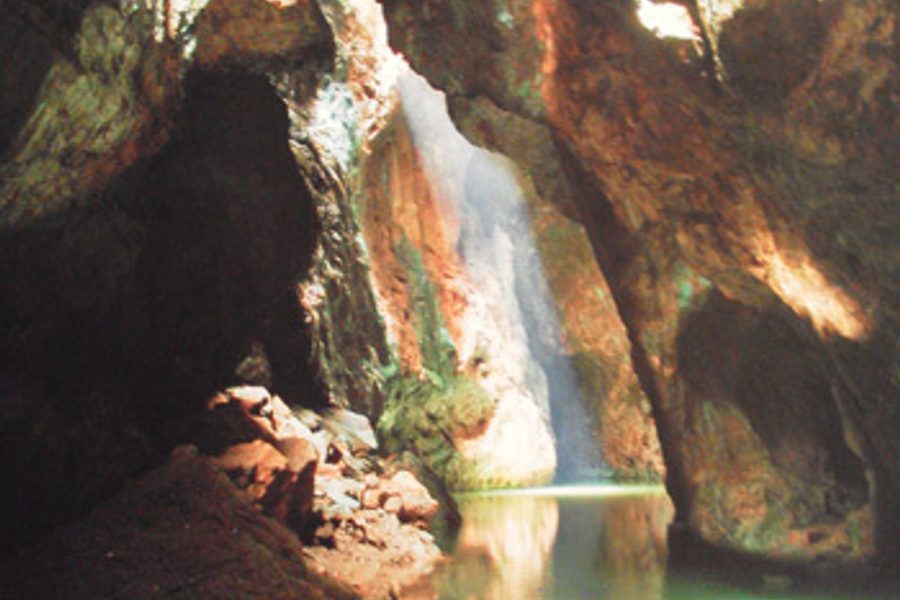
ALLIHIES, IRELAND — Last week, as I was catching up on U.S. news from Allihies, a small town perched on rugged cliffs on Ireland’s west coast, I read reports from Michigan’s Upper Peninsula of the latest developments in Rio Tinto’s in-the-works copper and nickel mine. Many in the economically-struggling area hope the mine will bring badly needed jobs and investment. Others think new mining in the area will destroy the outdoor recreation and tourism that have been a major part of the economy since historic mines closed up decades ago. Among the opponents is the Huron Mountain Club, an exclusive group whose early members include East Coast and Midwest industrial titans, which recently filed a lawsuit attempting to block the mine.
As in the Upper Peninsula, copper mining was once the lifeblood of Allihies. And when Allihies’ underground mines were tapped out and closed in the late 1800s, many of the Irish and Cornish miners left for mining jobs in the U.S., specifically in the Upper Peninsula and Butte, Mont., where they became famous for radical labor and anti-war activism.
The bravery and strength of Irish miners in Butte who went on strike opposing World War I, and U.S. support of the British, are not surprising, given the conditions they had labored under in the Irish mines. As I learned while visiting the excellent Allihies Copper Mine Museum, miners (including many children) toiled underground for 12-hour shifts and were paid no wages — only a sum for the actual copper extracted from the ore they hauled out (minus payments to the mine company for their equipment and supplies). The concentration of the copper in the ore was a matter of chance — it might bear none at all.
Miners had a one-in-two chance of contracting deadly silicosis from breathing in the rock dust, and were also at great risk from explosions, gassing and other disasters. The museum includes logs listing those killed, including one worker who died from an infection following a fracture of the skull, and a 13-year-old who died from leg injuries after suffering for hours. It also notes that after the death of one worker in a mine, his widow received only a small pension for one year.
The miners worked in teams, with light from candles stuck to their helmets with lumps of clay. One would hold a spike to the rock while others slammed it with massive hammers. During blasting, miners ran for their lives. “You hold your ears,” notes text from the exhibit, “but some of you don’t have to because you are already deaf.”
One display describes the innovation of the “man engine,” a crude escalator that carried men up and down the deep shafts so that they weren’t exhausted by the time they reached bottom — a dangerous, hour-long descent for which they received no pay. Wealthy mine owner John Puxley had calculated how much more he could profit if miners moved in and out more efficiently, noting that the man engine would also “keep the miners quiet.” Puxley imported food for miners during the famine of 1845, but the exhibit notes that it was not for “purely humanitarian reasons,” as he knew the mine would close if miners starved to death like so many Irish did during those years.
Miners from Cornwall often served as managers in the Irish mines, and once the Irish mines closed, they, like the Irish workers, fled to Michigan, California and Montana in search of new jobs. Many of the people hoping that a resurgence of mining in the Great Lakes region will create more jobs are descendants of these Cornish and Irish immigrants, as evidenced not only by their surnames, but also by the doughy meat-and-vegetable pasties sold in roadside shops around the U.P. An impressive multimedia presentation at the Allihies museum depicts the lively St. Patrick’s Day parades and Irish dance festivals in Butte — where Joe Hill often sang for striking miners — and notes that today, fifth-generation Irish Americans in Butte, most of whom have never been to Ireland, celebrate a culture “frozen in time” when their predecessors emigrated. The exhibit also describes the labor history of Butte, including the U.S. Army’s occupation of the town from 1917 until 1921, when it “broke the back of the labor movement and secured the interests of the Anaconda copper company.”
Today, copper is mined in ore that has exponentially lower concentrations than in the 1800s, given modern mining, refining technology and high prices. During the 1950s, a Canadian company hired locals to explore mining again around Allihies but ultimately decided it wasn’t worth it. Now, Allihies’ rich mining history is part of the town’s appeal to tourists; in addition to the museum there is a heritage trail winding by old mine shafts, crumbling stone engine houses and reservoirs used to provide hydropower for the operations. There are dreams of opening the underground shafts for tours, or even holding concerts in one of the cavernous “stopes,” where sunlight filtering in from the fractured rock creates an ethereal effect.
The photos and descriptions of the horrifying labor conditions and payment arrangements in the Allihies mines reminds one just how much things have changed since those days, thanks largely to the efforts of union immigrant miners. When those Irish mines opened two centuries ago, no one could imagine the iPads, car batteries, skyscrapers and precision machinery that are now driving demand for copper and other metals. But people are still fighting to balance the economic incentives and harmful effects of mining, struggling over where and how it is mined, by whom and for whom.
Kari Lydersen is a Chicago-based journalist, author and assistant professor at Northwestern University, where she leads the investigative specialization at the Medill School of Journalism, Media, Integrated Marketing Communications. Her books include Mayor 1%: Rahm Emanuel and the Rise of Chicago’s 99%.








